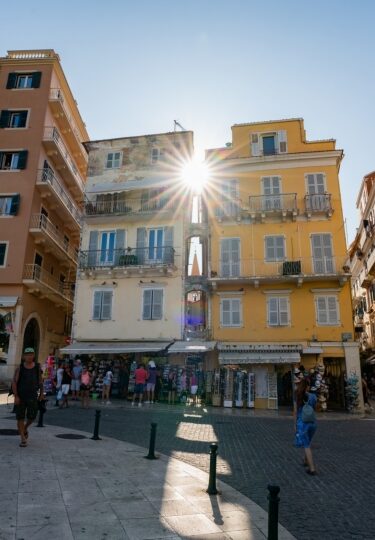Corfu is famed as the jewel of the Ionian Sea, its mountainous exterior rising above the deep blue waters and its shores lined with beaches and holiday resorts.
What many visitors tend to miss, though, is the evocative Corfu Town itself. Thanks to its strategic position, the island has been variously controlled by the Venetians, British and French, and Corfu Old Town’s architecture has a beguiling mix of all three.
Forget the typical white-washed, blue-roofed cubist houses of many other Greek islands. Here, the winding streets are lined with magnificent pastel-colored mansions, Byzantine churches and old fortifications—leading to Corfu Town being designated a UNESCO World Heritage Site.
Here are some of the best things to see and do in Corfu Town.
Walk the Old Fortress
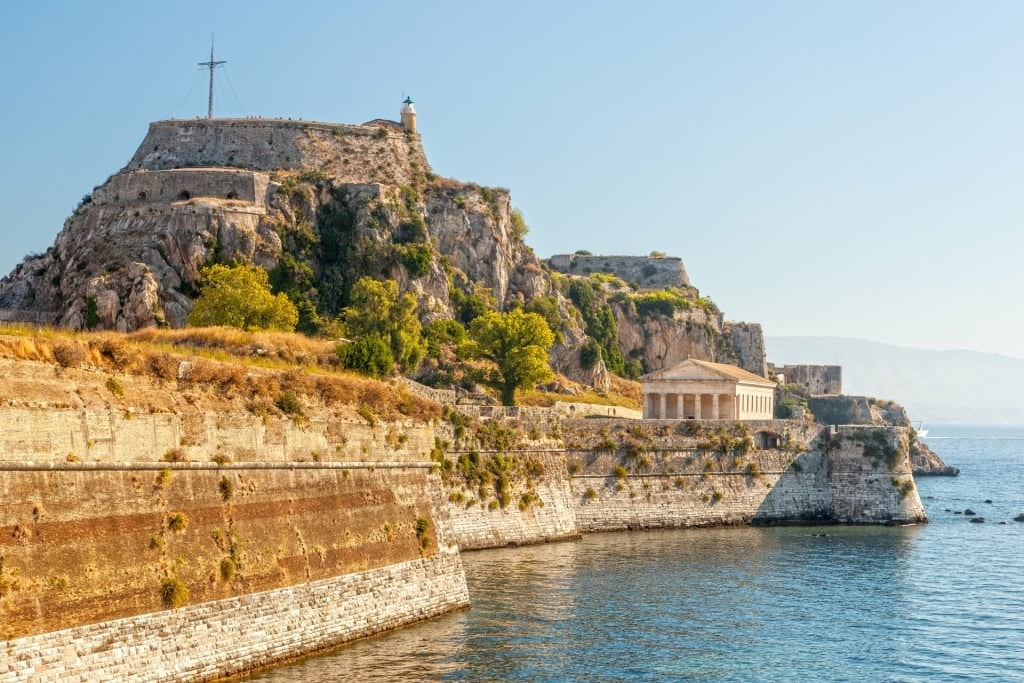
Old Fortress
Corfu Old Town sits on a promontory that juts out into the Ionian and is guarded by not one but two fortresses.
The Old Fort is the bigger of the two; the remains of a 15th-century Venetian fortress can be seen here, but there is evidence of fortifications on the site from as early as the eighth century AD when the island was under regular attack from the Ostrogoths.
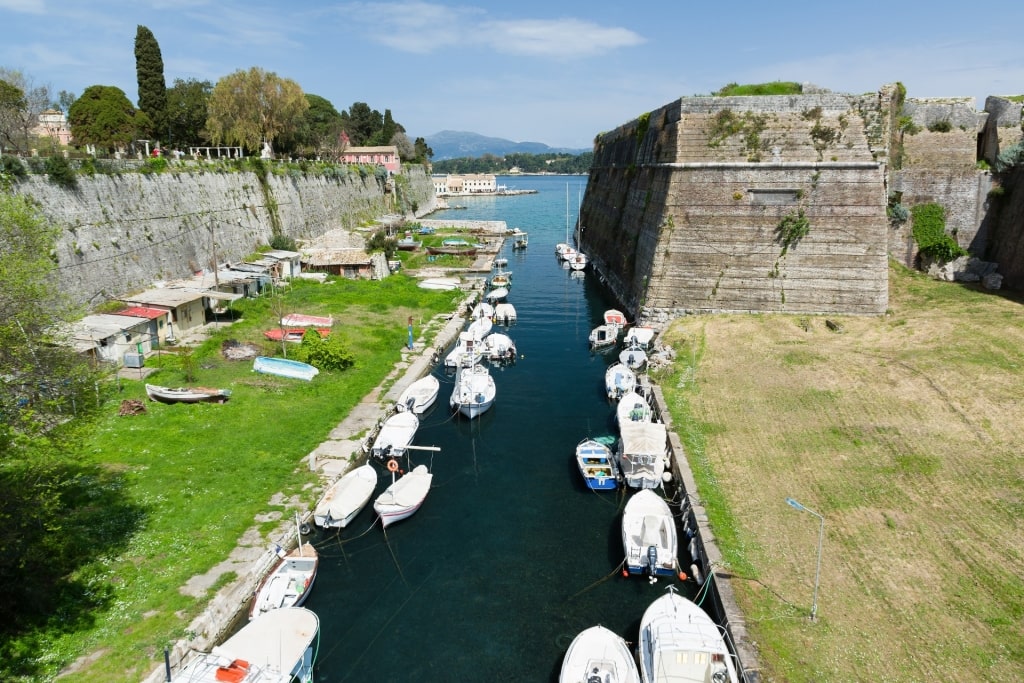
Contrafossa
Following the 1386 advent of Venetian rule and to further protect the citadel, the Contrafossa was built—a moat that connects the Gulf of Corfu to the north with the Bay of Garitsa to the south, and which turned the fortress into an island.
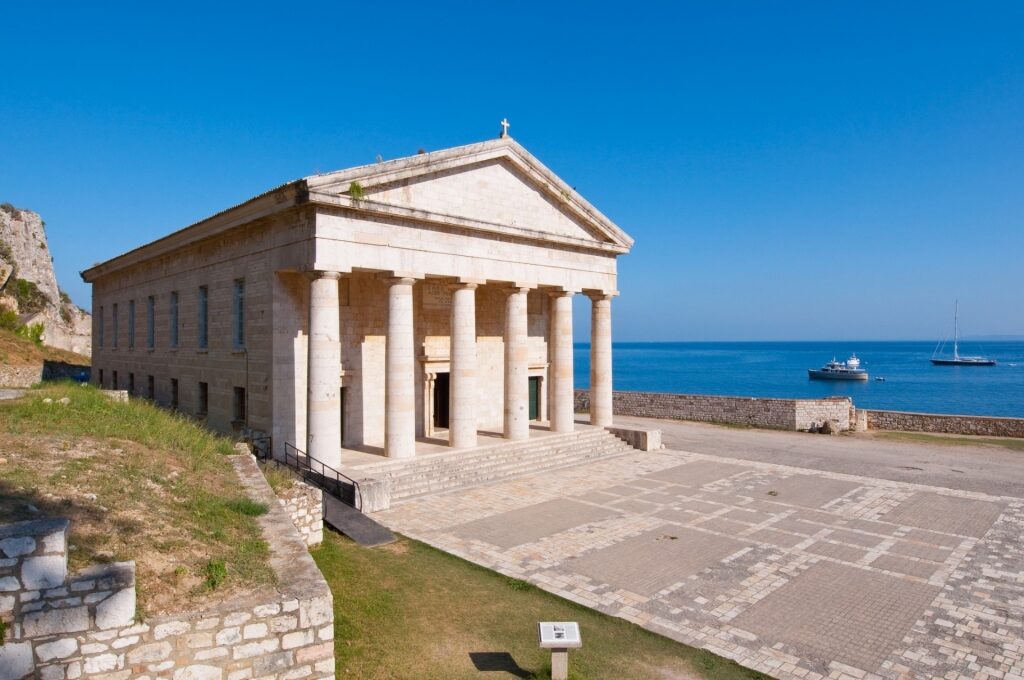
Church of St. George
Today, the fortress takes around 90 minutes to visit. Given it sits on a hill, there’s a decent amount of walking to be done, so comfortable shoes and water are both a must.
The Greek landmarks inside the fort itself are many and include the Byzantine Collection of the Old Fortress of Corfu, the Church of St. George, and the Old British Hospital. There are amazing views over the rooftops of the Old Town itself, too.
Visit the New Fortress
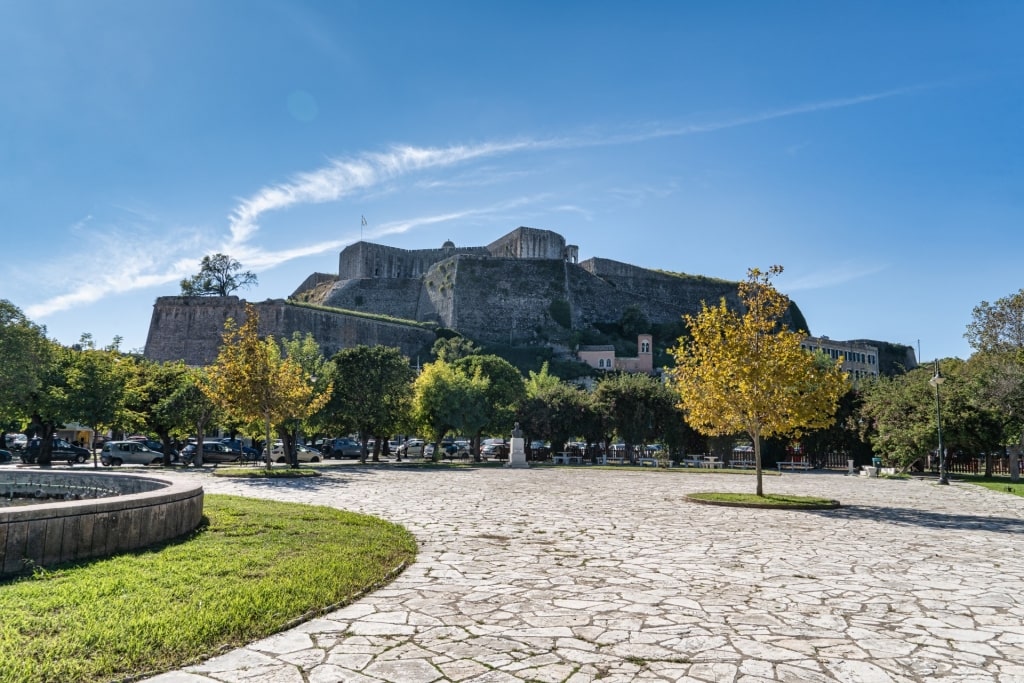
New Fortress
With the Old Fortress sitting to the east of the Old Town, its counterpart sits on the Western edge, dominating views of the left-hand side of the port when arriving by boat.
Don’t be fooled by the name, this second fortress is only “new” by comparison and was actually built sometime between 1576 and 1645 to help further fortify the Old Town from Ottoman invasion.
Clustered on St. Mark’s Hill, many of the buildings inside the fort date from 19th-century British rule, and a number have been converted into galleries. Again, the views of the Old Town from the fort are quite remarkable.
Stroll Around the Campiello
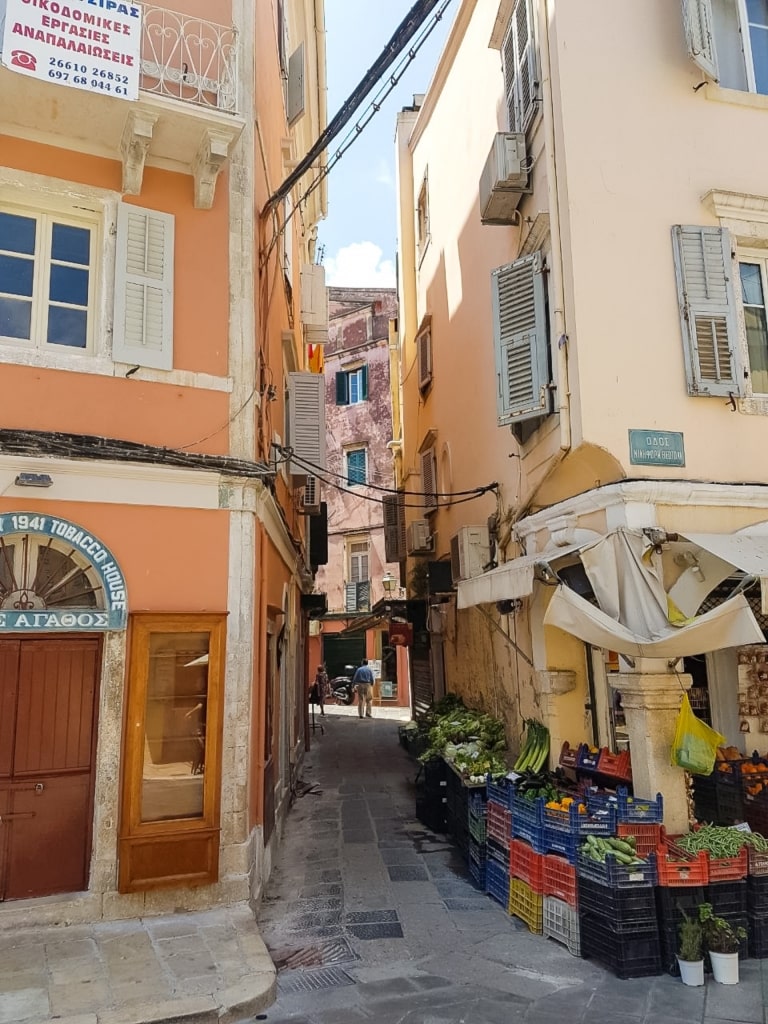
Campiello Photo by dronepicr on Flickr, licensed under CC BY 2.0
The Campiello is the medieval heart of the Old Town. This labyrinth of winding alleys (sokakia or kantounia, as they are known by locals) is a real treasure trove of stairways, squares, wells, churches, and elegant palazzi.
Laundry is strung from building to building adding a hint of authenticity to some of the more commercial areas. It’s easy to get lost here, but the area is relatively small and eventually, all streets lead back to the port or one of the two castles.
Seek Out the Old Jewish Quarter
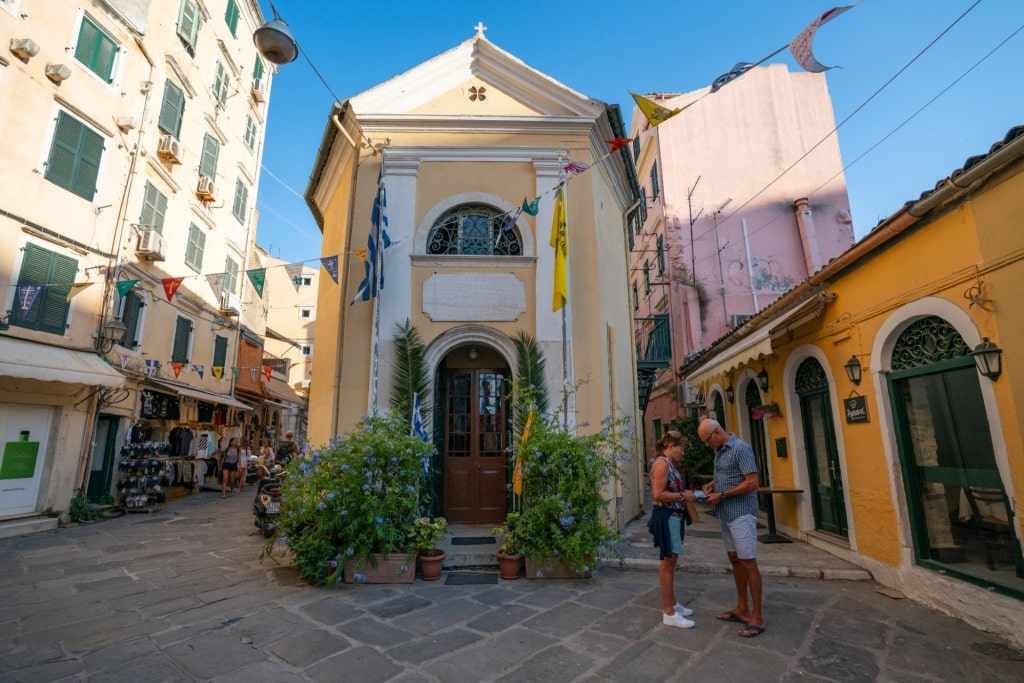
Old Jewish Quarter
Along Velissariou Street between the Campiello and the New Fortress sits the Jewish Quarter of Corfu Old Town.
Jewish people have made a home on the island since at least 1160 and were persecuted for many years until the arrival of the Venetians, when they became a prominent class of merchants and bankers.
British rule saw fortunes wane again and the population steadily declined, until fewer than 200 people were left on the island following atrocities committed by occupying Nazis during the Holocaust.
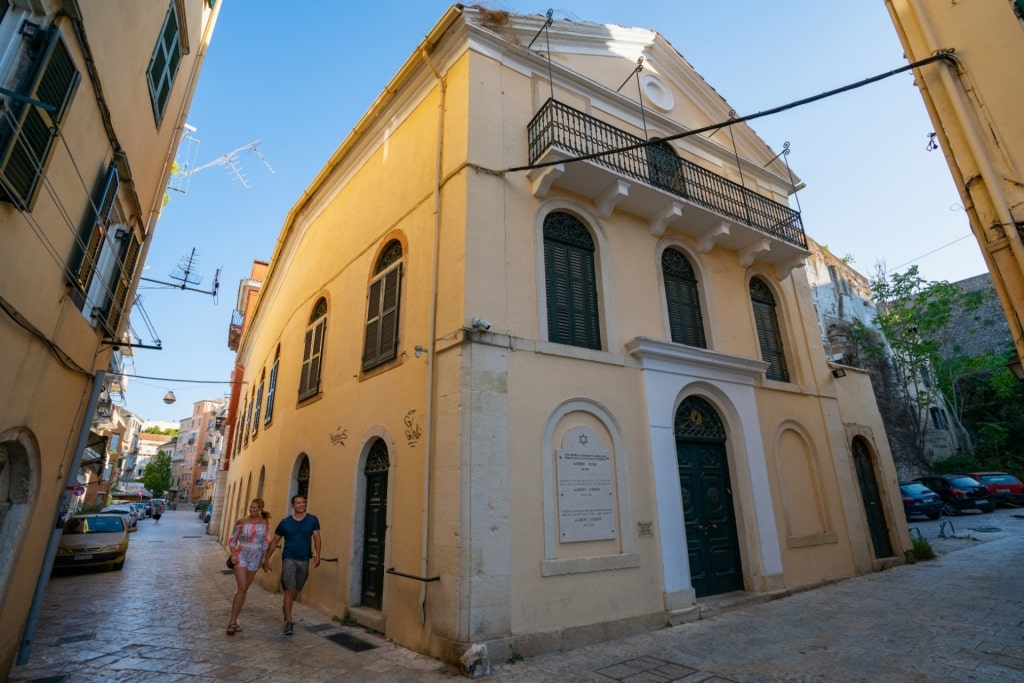
Scuola Greca
The legacy of Corfu’s Jewish community can still be seen in this former ghetto. Of the four synagogues, only the handsome Scuola Greca (Greek Temple) survived the Second World War and there’s a moving Holocaust memorial on Xenofontos Street.
It bears the transcription “Never again for any nation. Dedicated to the memory of the 2,000 Jews of Corfu who perished in the Nazi concentration camps of Auschwitz and Birkenau in June 1944”.
Take Refuge in the Durrell Gardens
Formerly known as the Boschetto Gardens (which means “small grove” in Italian), this shaded green area sits between the Old Fort and the Spiniada, Corfu Old Town’s vast gardens and public square.
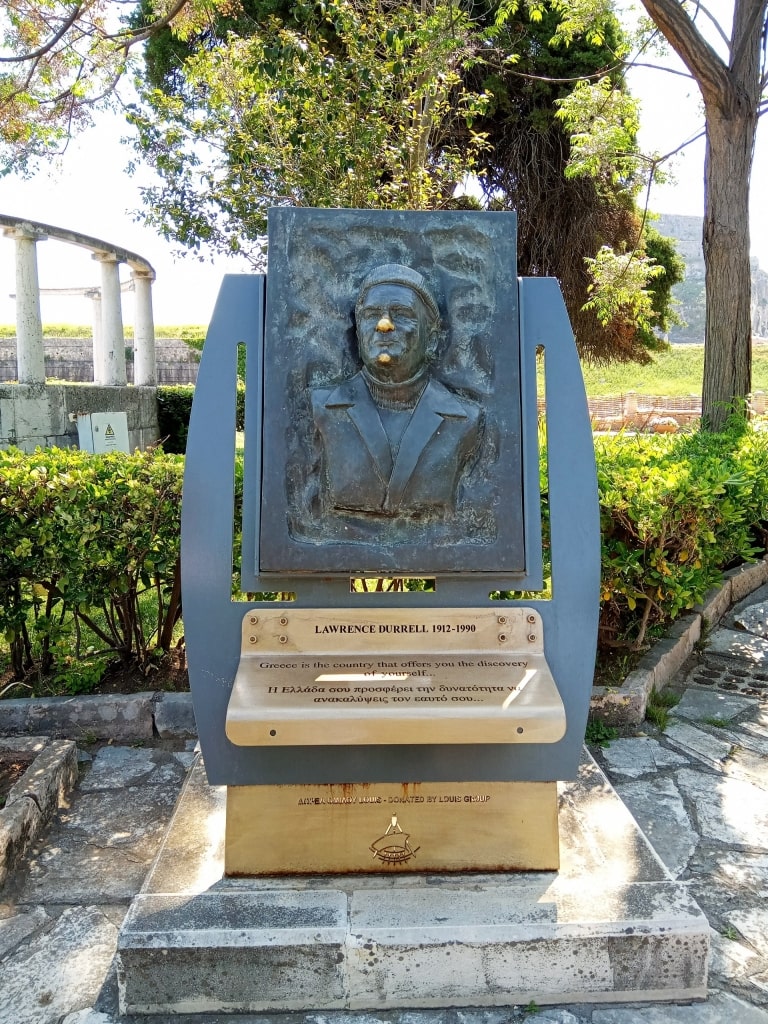
Lawrence Durrell statue Photo by Klarqa on Wikimedia Commons, licensed under CC BY-SA 4.0
Landscaped with flowerbeds, shrubs, and many trees, the gardens provide pleasant respite from the summer sun and are home to a marble statue of Lord Guilford, who helped found the Ionian Academy that preceded the island’s Ionian University.
In 2006, his statue was joined by two bronze busts of brothers and authors Gerald and Lawrence Durrell and renamed in their honor for their role in putting Corfu “on the map”.
Take a Dip at Faliraki Beach
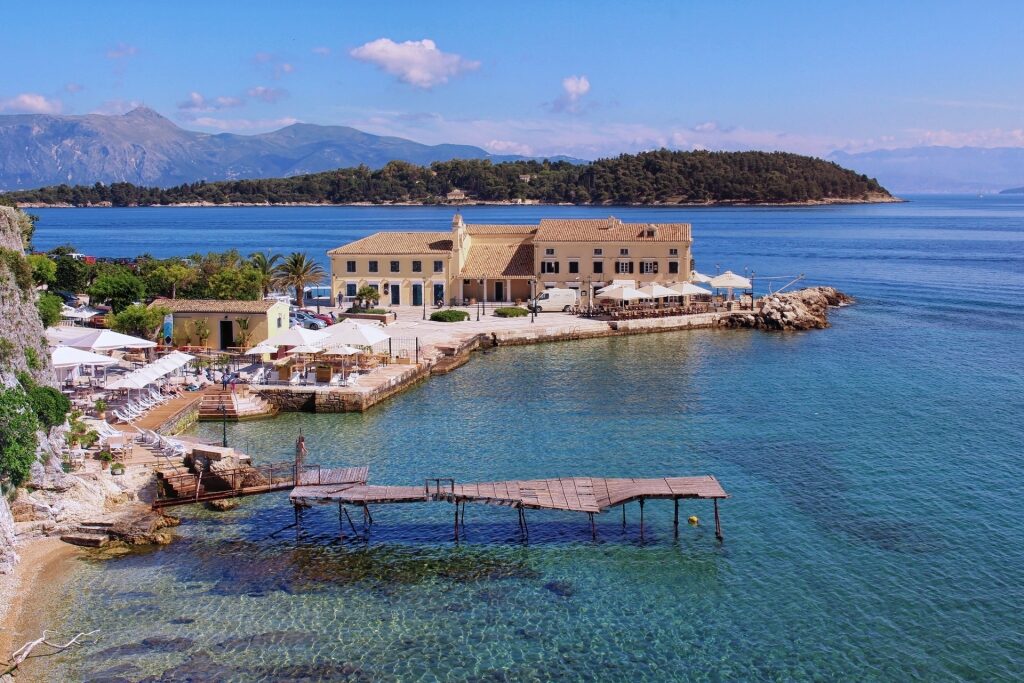
Faliraki Beach
Corfu is home to some of Greece’s best beaches, but for anyone in the Old Town looking to cool down, Faliraki is the place to go.
Sitting in the shadows of the Old Fortress, this small stretch of sand and quayside platforms has great views of both the fort and Vidos Island across the bay, and is a long-standing favorite of locals. There are also some lovely cafés and bars housed in the Venetian-era buildings along the shoreline.
Read: Best Beaches in Corfu
Catch Some Cricket at the Spianada
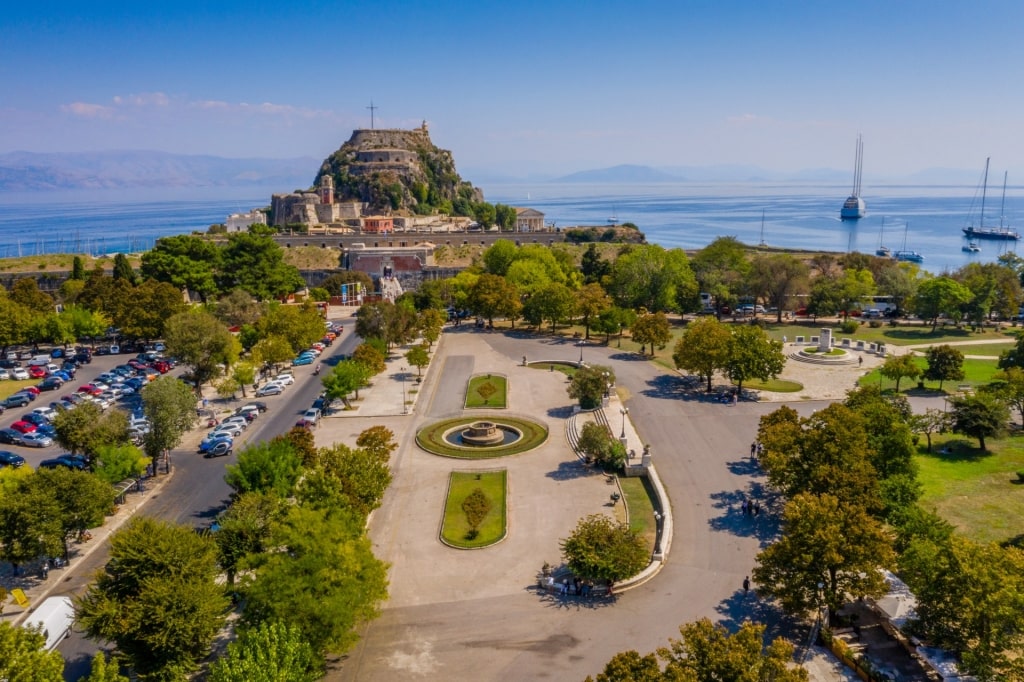
Spianada
By a strange quirk of fate, the Hellenic Cricket Federation’s headquarters are based in Corfu. This quintessentially British and British Empire sport was imported to the island during early 19th-century British rule and has never left since.
The main spot for playing is the Spianada, Corfu’s large public square and gardens, which separates the Old Town from the Old Fortress and which has the unique distinction of being the largest public square in all of Greece.
Most of the square itself is grass but there are some tree-lined walkways for respite on hot days, as well as a bandstand.
Stroll Down the Liston
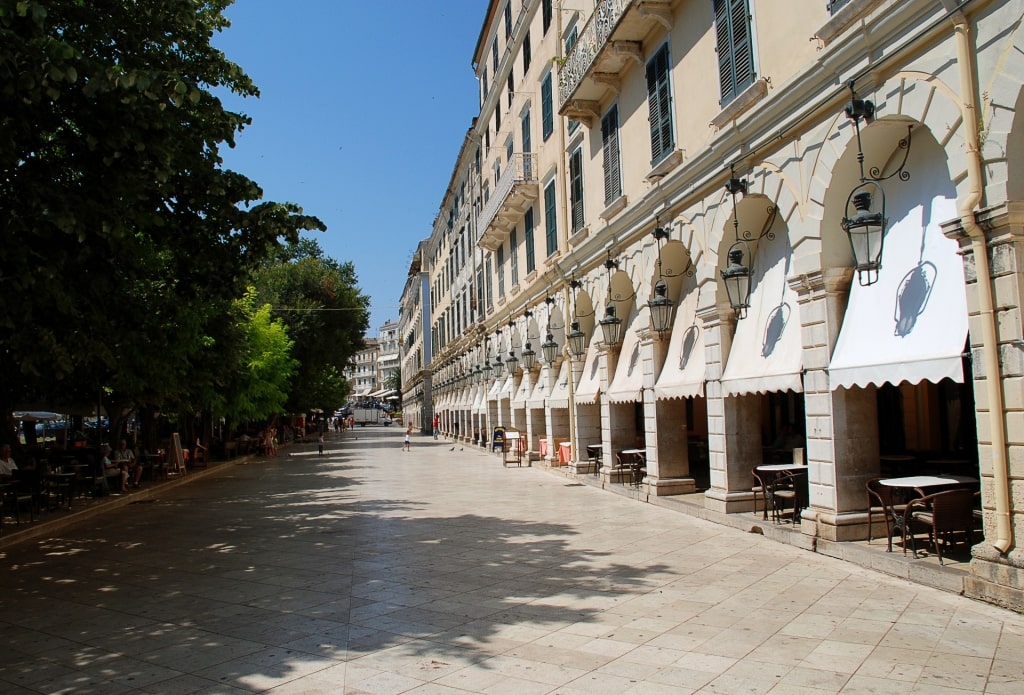
Liston
The Western edge of the Spianada is home to Corfu’s chicest area and the place to be seen on the island, the Liston.
Dating from Victorian times, this covered arcade and marbled walkway fully came to life during the brief French period of rule at the start of the 19th century and today it still feels like a small piece of Paris in the Ionian.
The arched colonnade is home to a number of cafés and shops and is a great spot for checking out what the island’s high society is up to.
Read: What Is Greece Known For?
Take in the Majesty of the Corfu Museum of Asian Art
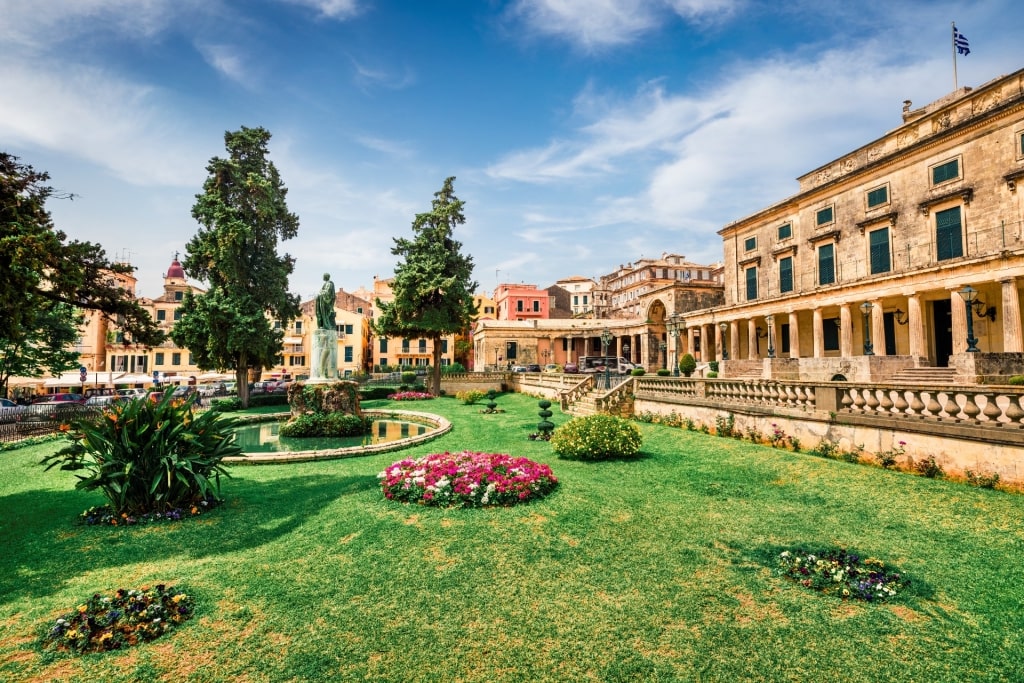
Corfu Museum of Asian Art
Corfu’s uniquely international and cosmopolitan vibe comes to the fore in its Museum of Asian Art, founded in 1928 when Greek ambassador to Austria and art collector Gregorios Manos donated his Sino-Japanese art collection to the Greek state.
The collection has since been further added to and now includes a fine array of Indian sculptures, Japanese prints, and Chinese porcelain.
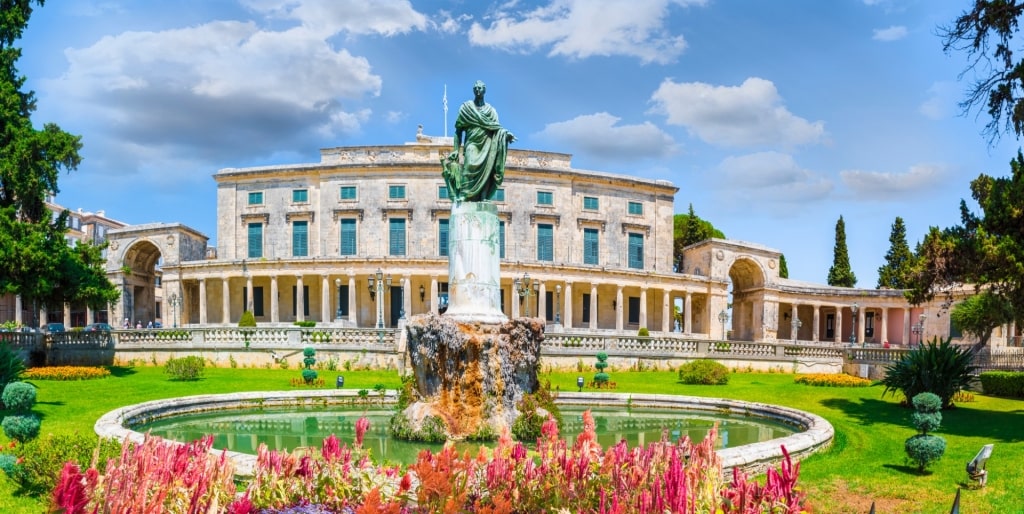
Corfu Museum of Asian Art
Almost as impressive as the art is the palatial building in which it is housed, The Palace of St. Michael and St. George.
Built in 1815 as the residence for the British High Commissioner, it later served as parliament for The Septinsular Republic (the United States of the Ionian Islands, or “Greece before Greece”) and then a summer palace for the Greek royal family following the recognition of Greece as an independent country in the early 19th century.
Pay Homage at the Church of St. Spyridon
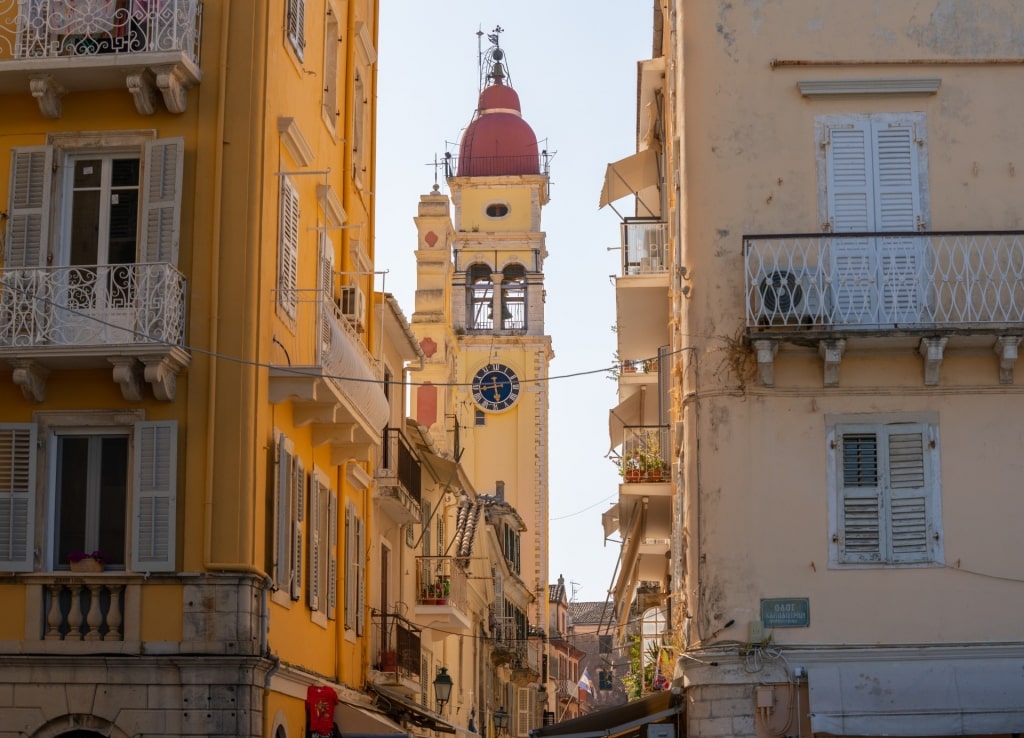
Church of St. Spyridon
British author and zoologist Gerald Durrell famously recounted tales of his family life on Corfu during the years 1935-39.
One of the more famous stories involved his elder sister Margaret actually kissing the mummified feet of the island’s venerated patron saint St. Spyridon at a religious festival, while the locals air-kissed above the saint’s remains.
Cypriot-born Spyridon’s journey to Corfu is a long and convoluted one. His relics were brought to Corfu from (then) Constantinople by the Greek monk Georgios Kalochairetis in 1489 and when his daughter married, they formed part of her dowry. The remains eventually settled in this church in the 1580s.
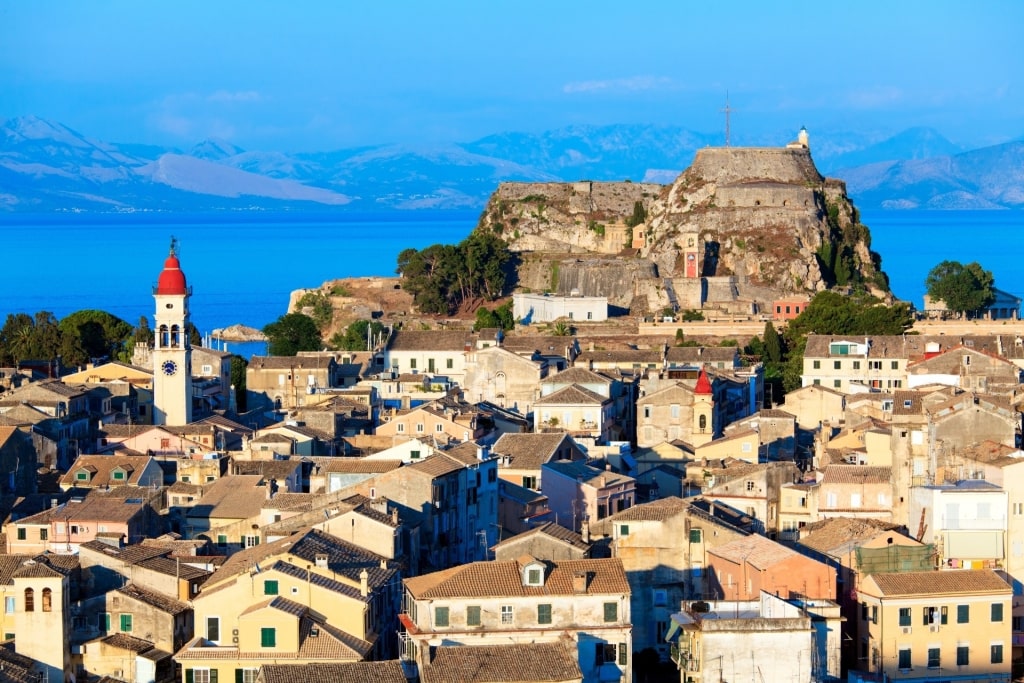
Church of St. Spyridon
Spyridon is much revered here as his spirit is said to have both expelled the plague from the island and defeated the Ottoman siege of 1716.
The ornate church, its walls lined with gilded icons, is both the most famous on Corfu and home to the largest bell tower in the Ionian islands. Those who wish to see the remains can do so in a small crypt to the right of the iconostasis.
Admire Religious Art at the Byzantine Museum of Antivouniotissa
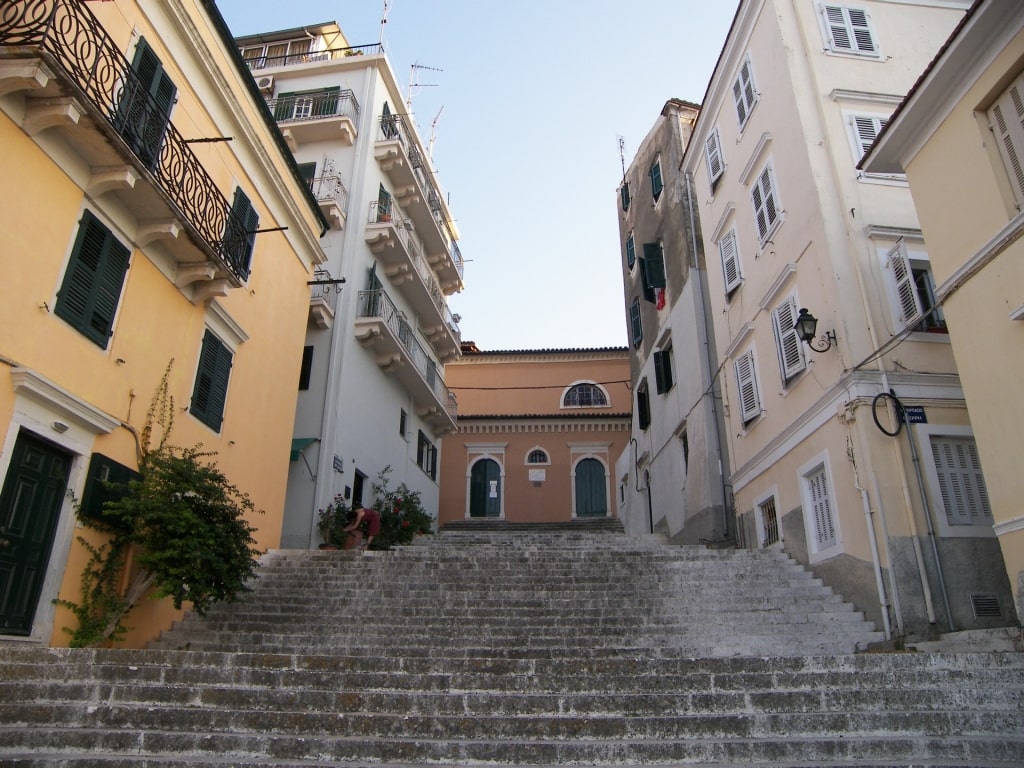
Byzantine Museum of Antivouniotissa Photo by Dr.K. on Wikimedia Commons, licensed under CC BY-SA 3.0
In the post-Byzantine era of religious art, there were two main schools. First came the Cretan, followed by the Heptanese era, which takes its name from the seven main islands of the Ionian Sea: Zakynthos, Ithaca, Corfu, Kefalonia, Lefkada, Paxos, and Kythira.
Both schools produced many incredible icons and some prime examples can be seen at this small but fascinating museum to the west of the Old Fortress.
Housed in a former church dedicated to the Holy Virgin “Our Lady of Antivouniotissa”, the museum is home to more than six centuries of art from both known and anonymous hagiographers.
Sample the Goods at Corfu Central Market
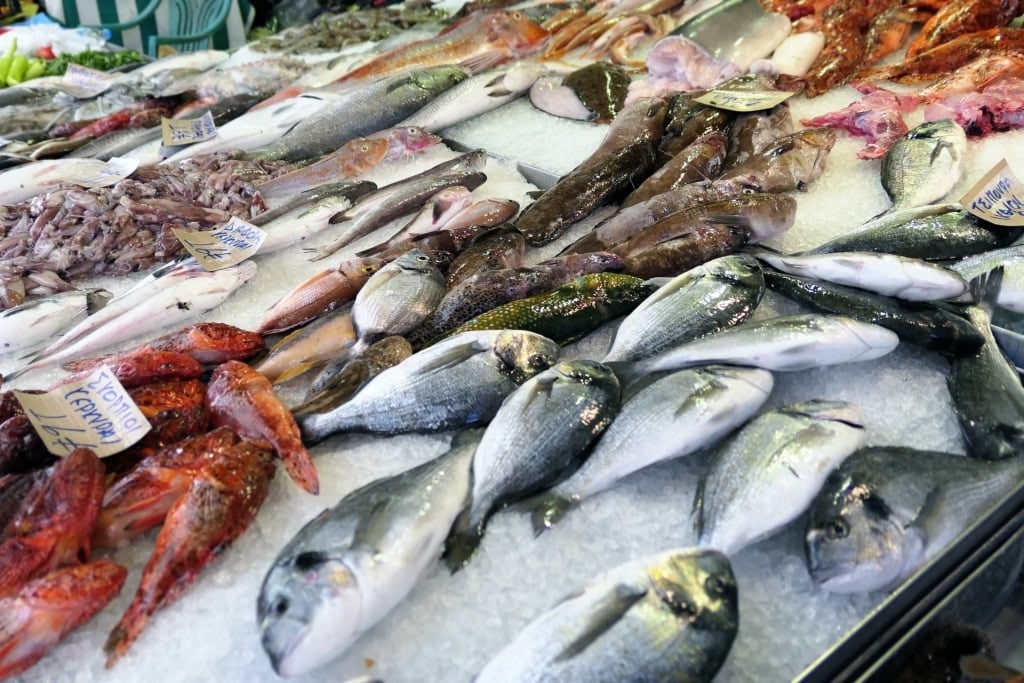
Corfu Central Market
Under the shadow of the New Venetian Fortress on a sunken street with an arcade running along its length is the town’s central market, a great place to get a real flavor of the island.
Stallholders sell all manner of goods, fresh fish, and other seafood, as well as fruit and vegetables, and other local produce such as sweets and herbs, the latter often grown in small market gardens.
The market is a great place to sample local produce and to see how locals live. There are two cafés here to rest weary legs after a morning’s shopping, too.
Take a Dip on Vidos island
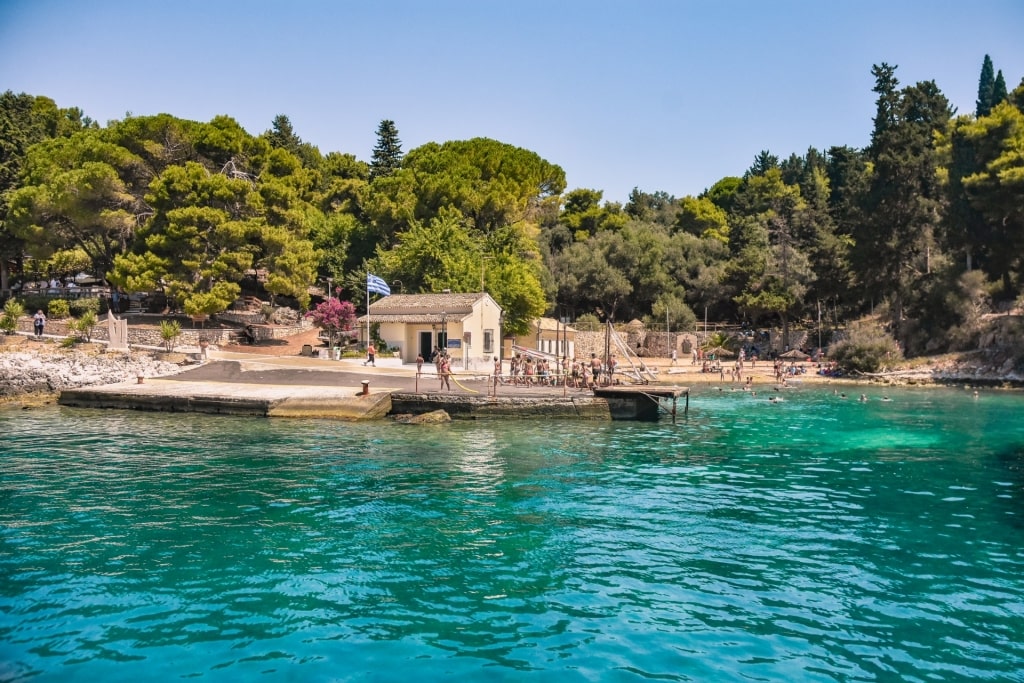
Vidos Island
Vidos island stands like a sentinel at the entrance to Corfu harbor and is one of the icons of the island and of Corfu Town in particular.
Formerly known as Corfu’s Alcatraz as it used to house a prison, today it is densely wooded with a number of small but fine beaches, hiking trails, and a small taverna.
There’s also a small mausoleum dedicated to almost 3,000 Serbian soldiers who lost their lives defending Corfu during World War I.
Read: Best Places to Go Hiking in Greece
See Medusa at the Archaeological Museum
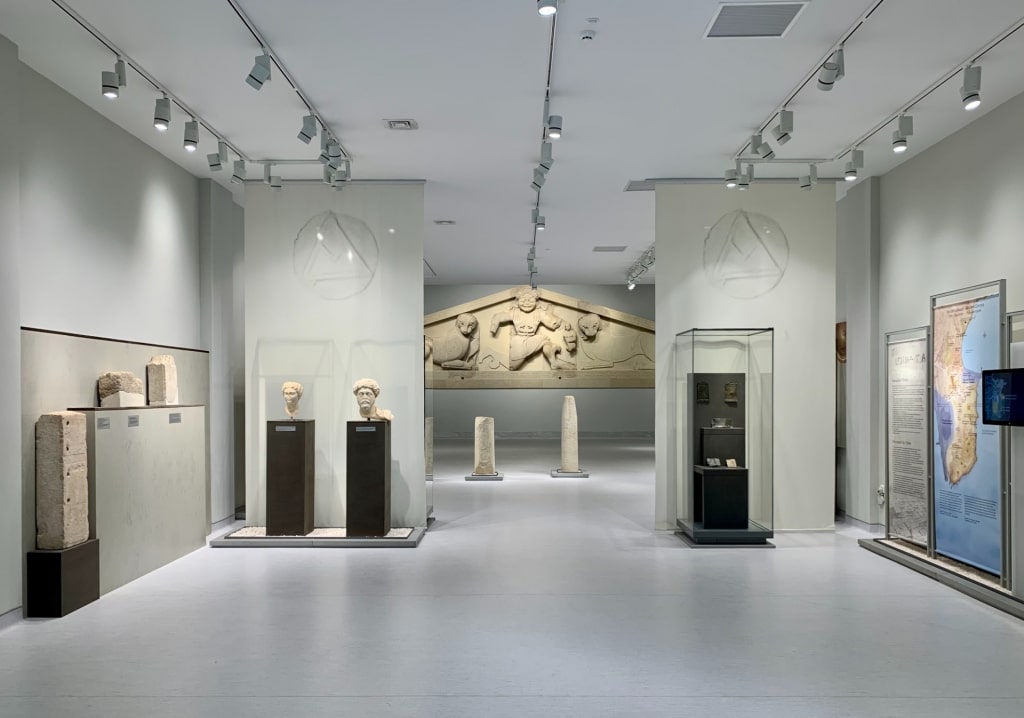
Archaeological Museum of Corfu Photo by Neoclassicism Enthusiast on Wikimedia Commons, licensed under CC BY-SA 4.0
The Archaeological Museum of Corfu was built between 1962 and 1965 with the original aim of exhibiting finds from excavations of the 580 BC Sanctuary of Artemis Gorgo. Since then, it has since been expanded to show works from other excavations on the island.
While small, the museum does contain a number of important exhibits, including The Lion of Menecrates from the seventh century BC, and a torso of Apollo from the second century AD by Pheidias, whose Statue of Zeus at Olympia was said to be one of the original Seven Wonders of the Ancient World.
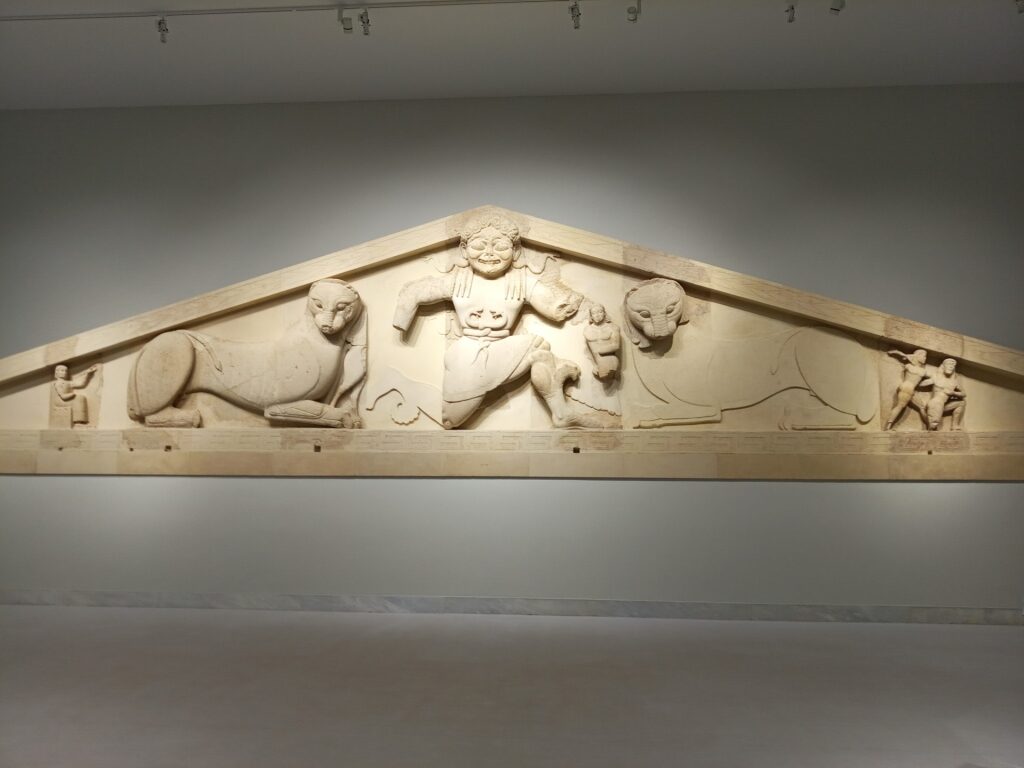
Archaeological Museum of Corfu Photo by Liubomir G on Wikimedia Commons, licensed under CC BY-SA 4.0
Pride of place, though, goes to the 55-foot-long bas-relief showing the slaying of Medusa that is said to date from the sixth century BC.
Sample a Local Beverage
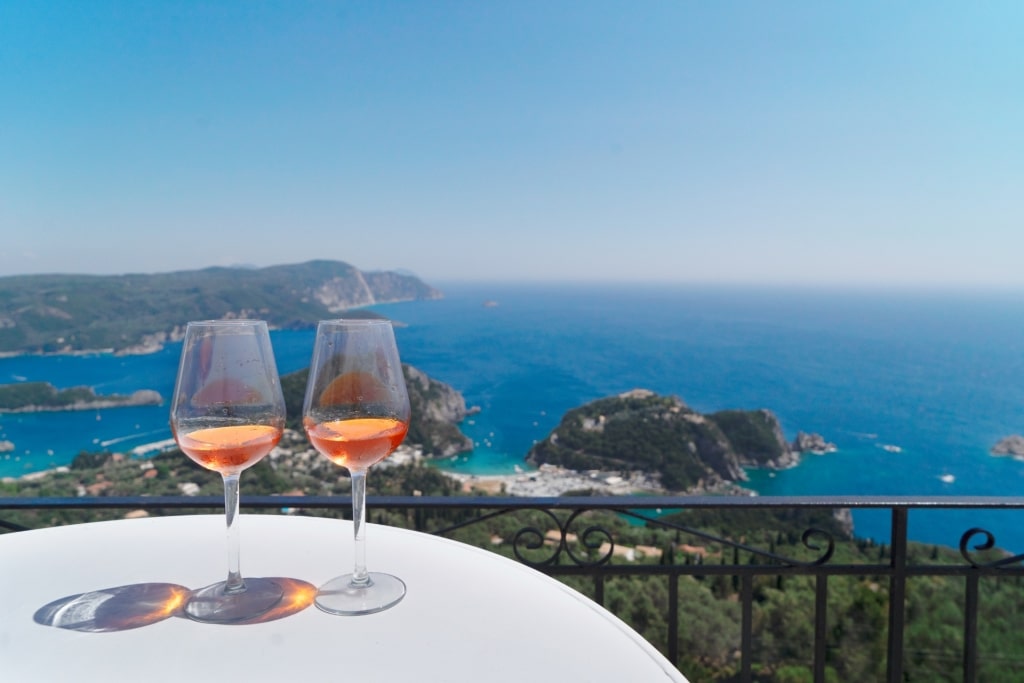
Kumquat
Corfu’s rich heritage means food and drink are perhaps unique in the whole of Greece with at least two of its beverage offerings being quirks you can only find here.
Kumquats were introduced to Corfu in the 19th century by British botanist Sidney Merlin, whose trees from China flourished in the local environment. While too bitter for many Greek palates, the small citrus fruits were soon turned into jams and a vodka-based liqueur that is ubiquitous in the island’s bars, cafés and souvenir shops.
The other drink is yet another from the British era. Tzitzibira, the Greek version of ginger beer, contains lemons, water, sugar, and, of course, ginger.
Both alcoholic and “dry” versions can be found from the many producers on the island. Make sure it’s served freezing cold and frothy in a frosted glass on a hot summer’s day to be best appreciated.
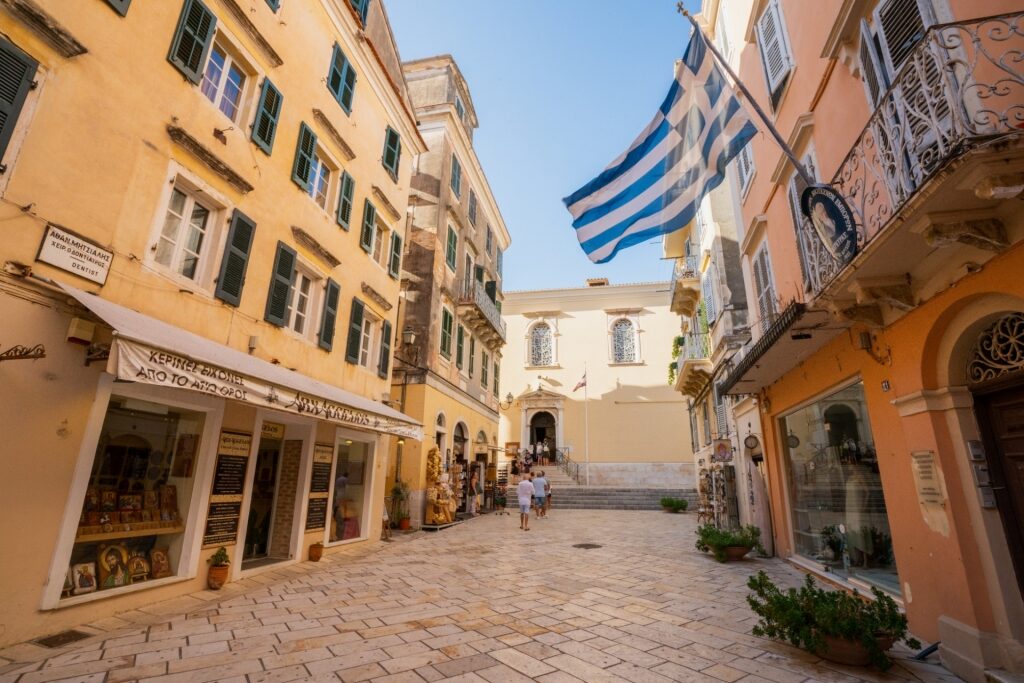
Corfu Town
Ready to discover Corfu’s enchanting Old Town for yourself? Browse Celebrity’s cruises to Corfu and plan your dream vacation.
